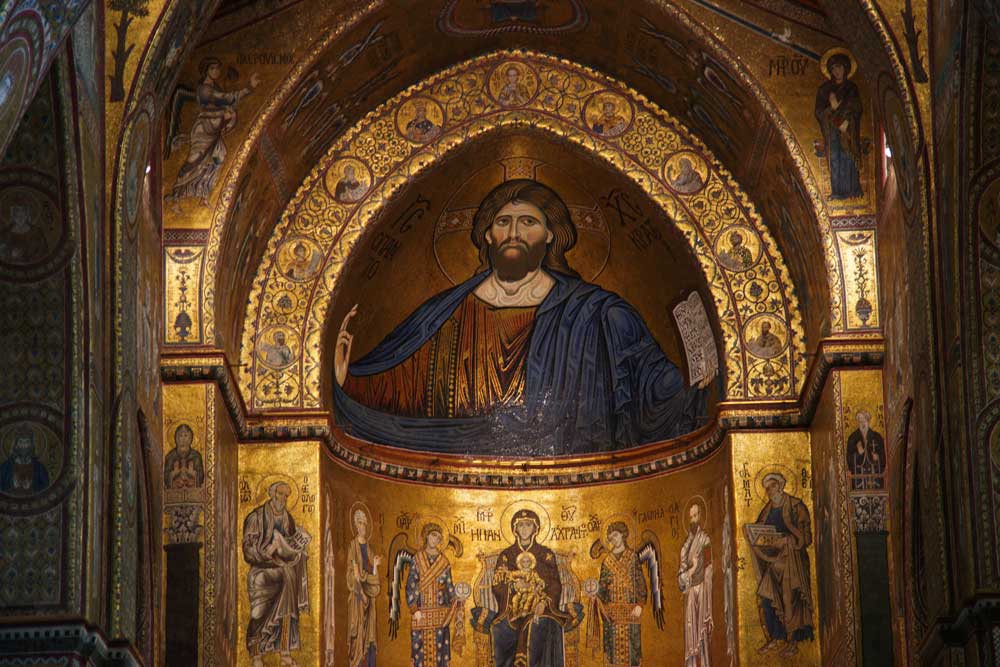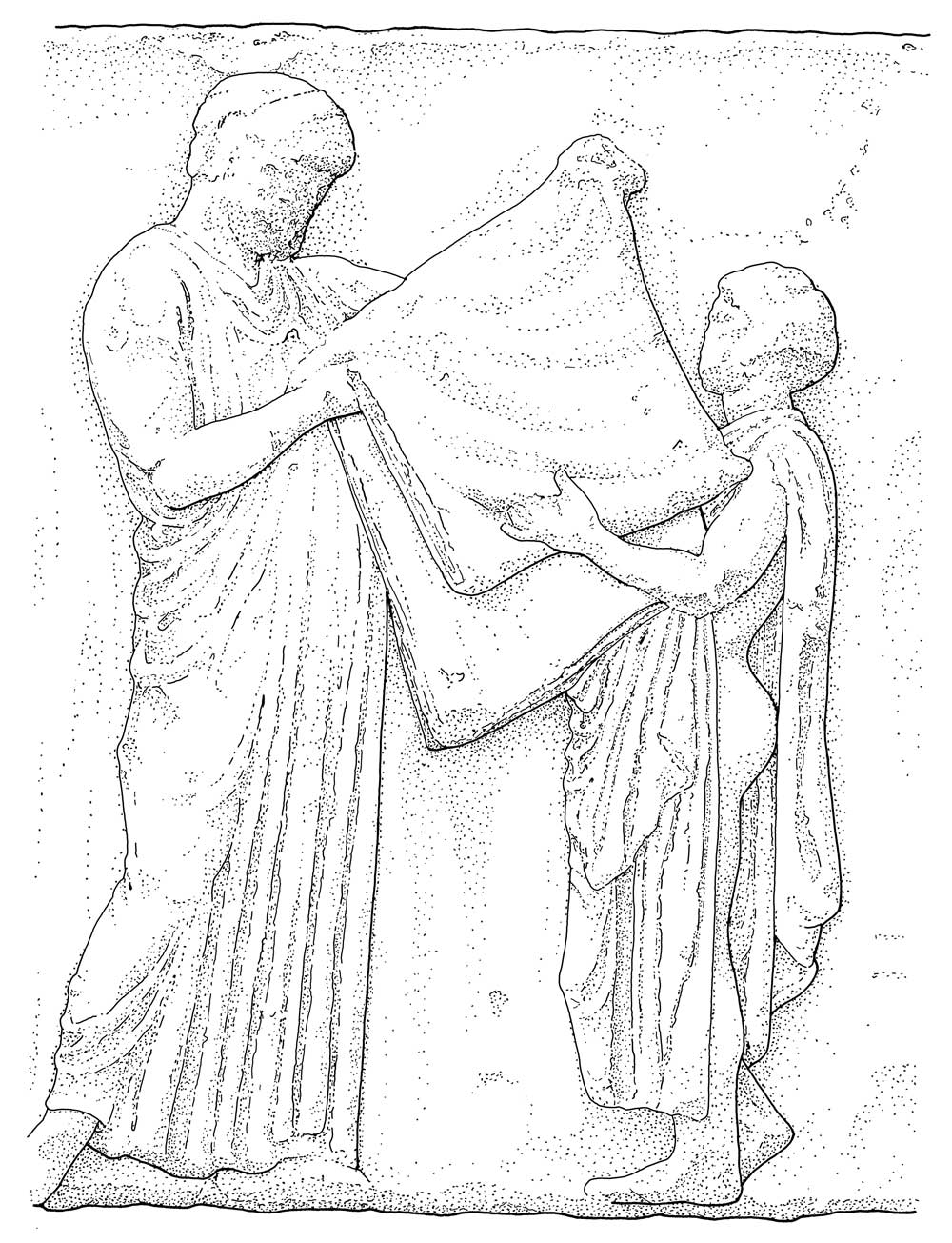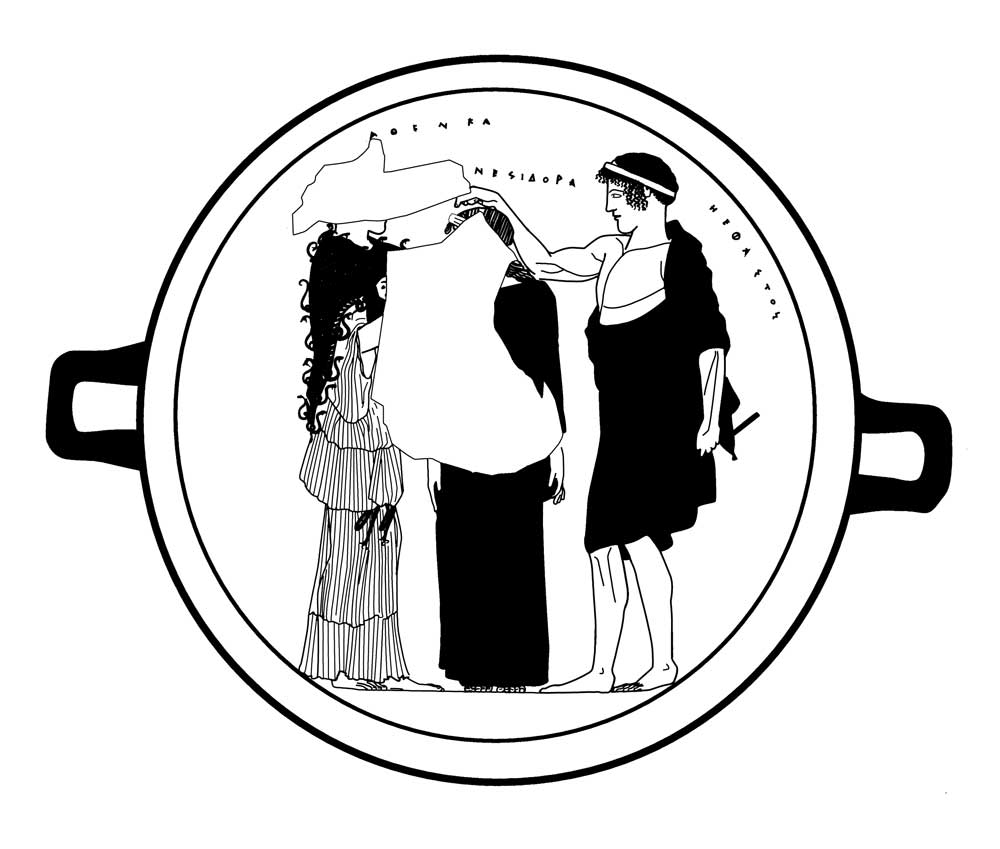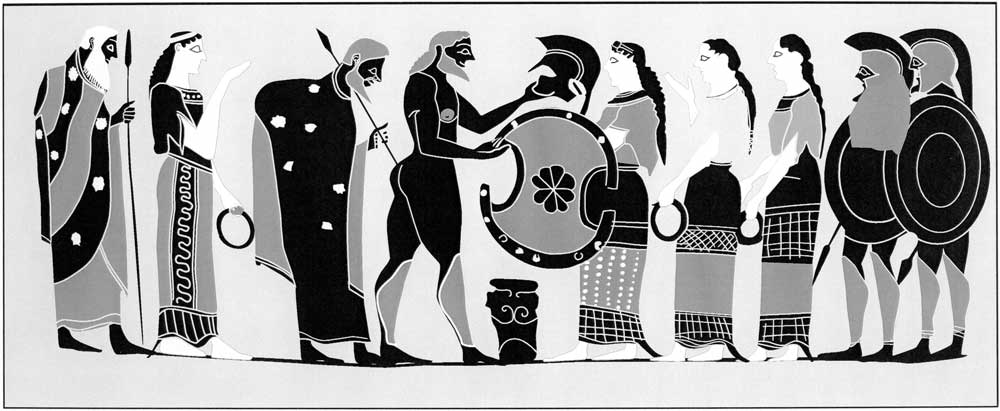-
Gregory Nagy, Masterpieces of Metonymy: From Ancient Greek Times to Now
Acknowledgments
List of Extracts
Introduction
I: Making metonyms both naturally and artistically
II: Interweaving metonymy and metaphor
III: Masterpieces of metonymy on the Acropolis
IV: The metonymy of a perfect festive moment
Epilogue without end: A metonymic reading of a love story
Bibliography
List of Extracts
0-A: Aristotle Poetics 1457b5–9
0-B: scholia for Dionysius of Thrace Ars Grammatica 461.5 ed. Hilgard 1901
0-C: Friedrich Nietzsche, Daybreak (Morgenröthe) 1885
0-D1: from the script of Hair (1978, directed by Miloš Forman; choreography by Twyla Tharp) ‘I got life’ (words by Gerome Ragni and James Rado, song by Galt MacDermot)
0-D2: From the film Hair.
1-A: Aristotle Poetics 1459a5–8
1-Ba: from the subtitled script of Il Postino (1994, directed by Michael Radford)
1-Bb: From in the film Il Postino
1-C: Catullus 85
1-Da: From the film Scent of a Woman.
1-Db: Audio recording of “Por una Cabeza.”
1-Dc: from the script for Scent of a Woman (1992; directed by Martin Brest, screenplay by Bo Goldman)
1-Dd: from the script for Scent of a Woman (1992)
1-De: from the script for Scent of a Woman (1992)
1-Ea: Jacques Offenbach The Tales of Hoffmann Act 5 [No. 27] [Dibbern 2000:138–139]
1-Eb: From in the 1981 video-audio recording of The Tales of Hoffmann.
[[from a video of the performance of The Tales of Hoffmann at Covent Garden 1981]]
1-Ec: Jacques Offenbach The Tales of Hoffmann Act 5 No. 25 [Dibbern 2000:136]
1-Ed: from the film The Tales of Hoffmann (1951; directed by Michael Powell and Emeric Pressburger; French libretto of Jules Barbier translated into English by Dennis Arundell)
1-Ef: From in the 1951 film The Tales of Hoffmann.
1-Fa: Hesiodic Theogony 31
1-Fb: Hesiodic Theogony 39–40
1-Fc: Hesiodic Theogony 65–66
1-Ga: Song of Songs 1:1, Latin Vulgate version [= 1.2 in the Hebrew Bible]
1-Gb: Song of Songs 1:2–4, Latin Vulgate version [where the numbering is 1:1–3]
1-Gc: Song of Songs 1:2–4, Greek Septuagint version [where, again, the numbering is 1:1–3]
1-Gd: Song of Songs 1.2–4, Masoretic text
1-Ha: first four couplets of Stanza III of the poem Epitaphios (᾿Επιτάφιος), by Yiannis Ritsos (Γιάννης Ρίτσος); the poem was originally published as Miroloyi (Μοιρολόγι) on May 12, 1936, in the Athenian newspaper Rizospastis (Ριζοσπάστης); set to music in 1958 by Mikis Theodorakis (Μίκης Θεοδωράκης)
1-Hb: Mikis Theodorakis (Μίκης Θεοδωράκης), Χείλι μου μοσχομύριστο, sung by Grigoris Bithikotsis (Γρηγόρης Μπιθικώτσης)
1-Hc: Mikis Theodorakis (Μίκης Θεοδωράκης), Χείλι μου μοσχομύριστο, rearranged by Manos Hadzidakis (Μάνος Χατζιδάκις), sung by Nana Mouskouri (Νάνα Μούσχουρη)
1-Hd: Photo: Tassos Toussis, lying dead on the street, is mourned by his mother. Originally published on the front page of the Greek newspaper Rizospastis (Ριζοσπάστης). May 10, 1936. Photo by kind permission of Rizospastis.

1-Ia: Iliad XVI 459
1-Ib: Iliad VI 459–461
1-Ic: Iliad VI 496
1-J: Virgil Aeneid 1.462
1-Ka: Lucretius De rerum natura 1.304
1-Kb: Lucretius De rerum natura 2.418–420
1-Kc: Lucretius De rerum natura 3.136–144
1-La: Iliad XVII 194–214
1-Lb: Iliad I 528–530
1-M: Strabo 8.3.30 C354
1-N: Dio of Prusa (“Dio Chrysostom”) 12.60–61
1-O: Mosaic of Christ Pantokrator. In the Monreale Cathedral, Santa Maria la Nuova, Sicily (near Palermo). Made available on Wikimedia Commons by the user Mboesch under a Creative Commons Attribution-Share Alike 3.0 license. Cropped version of color original.

1-P: from the poem Epitaphios, by Ritsos, turned into song by Theodorakis
1-Qa: Marinus Life of Proclus 30
1-Qb: Marinus Life of Proclus 6
1-Qc: Marinus Life of Proclus 10
1-Qd: Marinus Life of Proclus 36
1-R: Porphyry Life of Plotinus 2
1-S: Plato Phaedo 89a–89b
1-T: Proclus Commentary on the Republic of Plato VI (I p. 69 lines 23–26 and p. 70 lines 1–3 ed. Kroll 1899)
1-U: - from Homer the Heretic (season 4, episode 3; originally aired 1992.10.08), written by George Meyer, directed by Jim Reardon,
1-V: Wolfgang Saxon, New York Times obituary, Saturday March 31 2001 p. A 15. The headline reads: “Arthur D. Hasler, 93; Deciphered Salmon’s Homing Instinct”; the sub-headline reads: “Scientist inspired by an epiphany at a waterfall.
2-A: Aristotle Poetics 1459a5–8
2-Ba: Odyssey iii 120–121
2-Bb: Iliad II 553–554
2-Bc: Iliad XII 269–271
2-Ca: Iliad I 186–187
2-Cb: Iliad I 277–281
2-Cc: Iliad XVI 52–54
2-Da: Odyssey ii 121–122
2-Db: Hesiodic Works and Days 143–144
2-Ea: Sappho F 111.5–6
2-Eb: Sappho F 31.1–2
2-Fa: Odyssey iii 468
2-Fb: Odyssey xxiii 163
2-Fc: Odyssey xxiv 370–371
2-Fd: Odyssey xvi 172–212
2-Ga: Hesiodic Theogony 26–28
2-Gb: Odyssey xix 203
2-Gc: Odyssey iv 279
2-Ha: Homeric Hymn to Aphrodite 82–83
2-Hb: Homeric Hymn to Aphrodite 178–179
2-Hc: Homeric Hymn to Aphrodite 185–186
2-I: Iliad V 440–442
2-Ja: Odyssey vi 15–16
2-Jb: Iliad X 437
2-Jc: Iliad V 778
2-K: Aristotle Poetics 1457b5–9
2-La: Iliad I 201
2-Lb: Iliad I 312
2-Lc: Iliad Ι 483
2-M: Pindar Fragment 179
2-N: Virgil Aeneid 3.482–485
2-O: Iliad XXII 440–441
2-P: Iliad III 125–128
2-Q: Pindar Fragment 179
2-R: Iliad V 734–735
2-S: Scholia for Aristophanes Birds 827
2-T: Plato Euthyphro 6b–c
2-U: from the Appendix Vergiliana, Ciris 21–41
2-V: Euripides Hecuba 466–474
3-A: Iliad V 733–747
3-B: Pausanias 1.24.5–7
3-C: Relief sculpture: Folding of the Peplos of Athena. Block 5, east side of the Parthenon Frieze, Athens. Now in the British Museum. Drawing by Valerie Woelfel.

3-D: Hesychius s.v. Παρθένοι
3-E: Attic black-figure amphora: Side A, sacrifice of Polyxena. Attributed variously to the Tyrrhenian Group or the Timiades Painter, ca. 570–560 BCE. London, British Museum, 1897.0727.2. Line drawing from Walters 1898: Plate XV.

3-F: Pliny Natural History 36.18
3-Ga: Attic red-figure calyx krater: the Birth of Pandora. Attributed to the Niobid Painter, ca. 475–425 BCE. London, British Museum, GR 1856.12–13.1 (Vase E 467). Line drawing by Valerie Woelfel.

3Gb: Attic red-figure cup: the Creation of Pandora. Attributed to the Tarquinia Painter, ca. 475–425 B. C. London, British Museum, 1885.1-28.1. Line drawing by Valerie Woelfel.

3-H: Suda s.v. ἐργάνη
3-I: Suda s.v. Χαλκεῖα
3-J: Hesychius s.v. ἐργαστῖναι
4-A: Iliad XVIII 590–606
4-B: Iliad XVIII 603–606
4-C: Iliad XVIII 603–606
4-D: Odyssey iv 15–19
4-E: Odyssey viii 250–269, 367–369
4-F: Odyssey xiii 24–28
4-G: Thucydides 3.104.3–6
4-H: Homeric Hymn (3) to Apollo 146–150
4-I: Homeric Hymn (3) to Apollo 165–172
4-J: Homeric Hymn (3) to Apollo 165–178
4-K: Odyssey viii 429
4-L: Odyssey ix 3–12
4-M: Homeric Hymn (3) to Apollo 19 and 207
4-Na: Homeric Hymn (5) to Aphrodite 292–293
4-Nb: Homeric Hymn (9) to Artemis 7–9
4-Nc: Homeric Hymn (18) to Hermes 10–12
4-O: Pindar Nemean 2.1–3
4-P: Pindar Nemean 2.23–25
4-Q: Odyssey viii 429
4-R: Odyssey xiv 462–467
4-S: Pindar Nemean 7.74–76
4-T1: Callimachus Aetia F 66.2–5
4-T2: Scholia for Aristophanes Birds 827
4-Ua: Scholia for Pindar Olympian 7.152a 1 A
4-Ub: Scholia for Pindar Olympian 7.152 b 1 ABDEQ
4-Uc: Scholia for Pindar Olympian 7.152c 1 ABCEQ
4-Ud: Scholia for Pindar Olympian 7.152d 1 BCEQ
4-V: Scholia D (via Scholia A) for Iliad XVII 51
4-W: Iliad XVII 51–52
4-Xa: Euripides Electra 167–174
4-Xb: Euripides Electra 432–477
4-Ya: Attic black-figure column krater: Thetis presenting shield and other pieces of armor to Achilles. Attributed to the Painter of London B76. Berlin, Staatliche Museen, Antikensammlungen, 3763. Line drawing by Valerie Woelfel.

4-Yb: Attic black-figure hydria: Thetis presenting shield and garland to Achilles. Attributed to the Tyrrhenian Group. Paris, Musée du Louvre, E869. Line drawing by Valerie Woelfel.

4-Za: IG XII ix 189.1–8
4-Zb: IG XII ix 189.10–14
4-Zc: IG XII ix 189.38–40
4-Zd: IG XII ix 189.39
4-Ze: IG XII ix 189.2–4
4-Zf: IG XII ix 189.42–44
5-A: Xenophon of Ephesus 1.1.1–1.4.5
5-Ba: Xenophon of Ephesus 5.11.2–5.12.1
5-Bb: Xenophon of Ephesus 5.12.3
5-Bc: Xenophon of Ephesus 5.12.3–5.12.4
5-C: Xenophon of Ephesus 5.15.2–5.15.3
0-B: scholia for Dionysius of Thrace Ars Grammatica 461.5 ed. Hilgard 1901
0-C: Friedrich Nietzsche, Daybreak (Morgenröthe) 1885
0-D1: from the script of Hair (1978, directed by Miloš Forman; choreography by Twyla Tharp) ‘I got life’ (words by Gerome Ragni and James Rado, song by Galt MacDermot)
0-D2: From the film Hair.
1-A: Aristotle Poetics 1459a5–8
1-Ba: from the subtitled script of Il Postino (1994, directed by Michael Radford)
1-Bb: From in the film Il Postino
1-C: Catullus 85
1-Da: From the film Scent of a Woman.
1-Db: Audio recording of “Por una Cabeza.”
1-Dc: from the script for Scent of a Woman (1992; directed by Martin Brest, screenplay by Bo Goldman)
1-Dd: from the script for Scent of a Woman (1992)
1-De: from the script for Scent of a Woman (1992)
1-Ea: Jacques Offenbach The Tales of Hoffmann Act 5 [No. 27] [Dibbern 2000:138–139]
1-Eb: From in the 1981 video-audio recording of The Tales of Hoffmann.
[[from a video of the performance of The Tales of Hoffmann at Covent Garden 1981]]
1-Ec: Jacques Offenbach The Tales of Hoffmann Act 5 No. 25 [Dibbern 2000:136]
1-Ed: from the film The Tales of Hoffmann (1951; directed by Michael Powell and Emeric Pressburger; French libretto of Jules Barbier translated into English by Dennis Arundell)
1-Ef: From in the 1951 film The Tales of Hoffmann.
1-Fa: Hesiodic Theogony 31
1-Fb: Hesiodic Theogony 39–40
1-Fc: Hesiodic Theogony 65–66
1-Ga: Song of Songs 1:1, Latin Vulgate version [= 1.2 in the Hebrew Bible]
1-Gb: Song of Songs 1:2–4, Latin Vulgate version [where the numbering is 1:1–3]
1-Gc: Song of Songs 1:2–4, Greek Septuagint version [where, again, the numbering is 1:1–3]
1-Gd: Song of Songs 1.2–4, Masoretic text
1-Ha: first four couplets of Stanza III of the poem Epitaphios (᾿Επιτάφιος), by Yiannis Ritsos (Γιάννης Ρίτσος); the poem was originally published as Miroloyi (Μοιρολόγι) on May 12, 1936, in the Athenian newspaper Rizospastis (Ριζοσπάστης); set to music in 1958 by Mikis Theodorakis (Μίκης Θεοδωράκης)
1-Hb: Mikis Theodorakis (Μίκης Θεοδωράκης), Χείλι μου μοσχομύριστο, sung by Grigoris Bithikotsis (Γρηγόρης Μπιθικώτσης)
1-Hc: Mikis Theodorakis (Μίκης Θεοδωράκης), Χείλι μου μοσχομύριστο, rearranged by Manos Hadzidakis (Μάνος Χατζιδάκις), sung by Nana Mouskouri (Νάνα Μούσχουρη)
1-Hd: Photo: Tassos Toussis, lying dead on the street, is mourned by his mother. Originally published on the front page of the Greek newspaper Rizospastis (Ριζοσπάστης). May 10, 1936. Photo by kind permission of Rizospastis.

1-Ia: Iliad XVI 459
1-Ib: Iliad VI 459–461
1-Ic: Iliad VI 496
1-J: Virgil Aeneid 1.462
1-Ka: Lucretius De rerum natura 1.304
1-Kb: Lucretius De rerum natura 2.418–420
1-Kc: Lucretius De rerum natura 3.136–144
1-La: Iliad XVII 194–214
1-Lb: Iliad I 528–530
1-M: Strabo 8.3.30 C354
1-N: Dio of Prusa (“Dio Chrysostom”) 12.60–61
1-O: Mosaic of Christ Pantokrator. In the Monreale Cathedral, Santa Maria la Nuova, Sicily (near Palermo). Made available on Wikimedia Commons by the user Mboesch under a Creative Commons Attribution-Share Alike 3.0 license. Cropped version of color original.

1-P: from the poem Epitaphios, by Ritsos, turned into song by Theodorakis
1-Qa: Marinus Life of Proclus 30
1-Qb: Marinus Life of Proclus 6
1-Qc: Marinus Life of Proclus 10
1-Qd: Marinus Life of Proclus 36
1-R: Porphyry Life of Plotinus 2
1-S: Plato Phaedo 89a–89b
1-T: Proclus Commentary on the Republic of Plato VI (I p. 69 lines 23–26 and p. 70 lines 1–3 ed. Kroll 1899)
1-U: - from Homer the Heretic (season 4, episode 3; originally aired 1992.10.08), written by George Meyer, directed by Jim Reardon,
1-V: Wolfgang Saxon, New York Times obituary, Saturday March 31 2001 p. A 15. The headline reads: “Arthur D. Hasler, 93; Deciphered Salmon’s Homing Instinct”; the sub-headline reads: “Scientist inspired by an epiphany at a waterfall.
2-A: Aristotle Poetics 1459a5–8
2-Ba: Odyssey iii 120–121
2-Bb: Iliad II 553–554
2-Bc: Iliad XII 269–271
2-Ca: Iliad I 186–187
2-Cb: Iliad I 277–281
2-Cc: Iliad XVI 52–54
2-Da: Odyssey ii 121–122
2-Db: Hesiodic Works and Days 143–144
2-Ea: Sappho F 111.5–6
2-Eb: Sappho F 31.1–2
2-Fa: Odyssey iii 468
2-Fb: Odyssey xxiii 163
2-Fc: Odyssey xxiv 370–371
2-Fd: Odyssey xvi 172–212
2-Ga: Hesiodic Theogony 26–28
2-Gb: Odyssey xix 203
2-Gc: Odyssey iv 279
2-Ha: Homeric Hymn to Aphrodite 82–83
2-Hb: Homeric Hymn to Aphrodite 178–179
2-Hc: Homeric Hymn to Aphrodite 185–186
2-I: Iliad V 440–442
2-Ja: Odyssey vi 15–16
2-Jb: Iliad X 437
2-Jc: Iliad V 778
2-K: Aristotle Poetics 1457b5–9
2-La: Iliad I 201
2-Lb: Iliad I 312
2-Lc: Iliad Ι 483
2-M: Pindar Fragment 179
2-N: Virgil Aeneid 3.482–485
2-O: Iliad XXII 440–441
2-P: Iliad III 125–128
2-Q: Pindar Fragment 179
2-R: Iliad V 734–735
2-S: Scholia for Aristophanes Birds 827
2-T: Plato Euthyphro 6b–c
2-U: from the Appendix Vergiliana, Ciris 21–41
2-V: Euripides Hecuba 466–474
3-A: Iliad V 733–747
3-B: Pausanias 1.24.5–7
3-C: Relief sculpture: Folding of the Peplos of Athena. Block 5, east side of the Parthenon Frieze, Athens. Now in the British Museum. Drawing by Valerie Woelfel.

3-D: Hesychius s.v. Παρθένοι
3-E: Attic black-figure amphora: Side A, sacrifice of Polyxena. Attributed variously to the Tyrrhenian Group or the Timiades Painter, ca. 570–560 BCE. London, British Museum, 1897.0727.2. Line drawing from Walters 1898: Plate XV.

3-F: Pliny Natural History 36.18
3-Ga: Attic red-figure calyx krater: the Birth of Pandora. Attributed to the Niobid Painter, ca. 475–425 BCE. London, British Museum, GR 1856.12–13.1 (Vase E 467). Line drawing by Valerie Woelfel.

3Gb: Attic red-figure cup: the Creation of Pandora. Attributed to the Tarquinia Painter, ca. 475–425 B. C. London, British Museum, 1885.1-28.1. Line drawing by Valerie Woelfel.

3-H: Suda s.v. ἐργάνη
3-I: Suda s.v. Χαλκεῖα
3-J: Hesychius s.v. ἐργαστῖναι
4-A: Iliad XVIII 590–606
4-B: Iliad XVIII 603–606
4-C: Iliad XVIII 603–606
4-D: Odyssey iv 15–19
4-E: Odyssey viii 250–269, 367–369
4-F: Odyssey xiii 24–28
4-G: Thucydides 3.104.3–6
4-H: Homeric Hymn (3) to Apollo 146–150
4-I: Homeric Hymn (3) to Apollo 165–172
4-J: Homeric Hymn (3) to Apollo 165–178
4-K: Odyssey viii 429
4-L: Odyssey ix 3–12
4-M: Homeric Hymn (3) to Apollo 19 and 207
4-Na: Homeric Hymn (5) to Aphrodite 292–293
4-Nb: Homeric Hymn (9) to Artemis 7–9
4-Nc: Homeric Hymn (18) to Hermes 10–12
4-O: Pindar Nemean 2.1–3
4-P: Pindar Nemean 2.23–25
4-Q: Odyssey viii 429
4-R: Odyssey xiv 462–467
4-S: Pindar Nemean 7.74–76
4-T1: Callimachus Aetia F 66.2–5
4-T2: Scholia for Aristophanes Birds 827
4-Ua: Scholia for Pindar Olympian 7.152a 1 A
4-Ub: Scholia for Pindar Olympian 7.152 b 1 ABDEQ
4-Uc: Scholia for Pindar Olympian 7.152c 1 ABCEQ
4-Ud: Scholia for Pindar Olympian 7.152d 1 BCEQ
4-V: Scholia D (via Scholia A) for Iliad XVII 51
4-W: Iliad XVII 51–52
4-Xa: Euripides Electra 167–174
4-Xb: Euripides Electra 432–477
4-Ya: Attic black-figure column krater: Thetis presenting shield and other pieces of armor to Achilles. Attributed to the Painter of London B76. Berlin, Staatliche Museen, Antikensammlungen, 3763. Line drawing by Valerie Woelfel.

4-Yb: Attic black-figure hydria: Thetis presenting shield and garland to Achilles. Attributed to the Tyrrhenian Group. Paris, Musée du Louvre, E869. Line drawing by Valerie Woelfel.

4-Za: IG XII ix 189.1–8
4-Zb: IG XII ix 189.10–14
4-Zc: IG XII ix 189.38–40
4-Zd: IG XII ix 189.39
4-Ze: IG XII ix 189.2–4
4-Zf: IG XII ix 189.42–44
5-A: Xenophon of Ephesus 1.1.1–1.4.5
5-Ba: Xenophon of Ephesus 5.11.2–5.12.1
5-Bb: Xenophon of Ephesus 5.12.3
5-Bc: Xenophon of Ephesus 5.12.3–5.12.4
5-C: Xenophon of Ephesus 5.15.2–5.15.3


